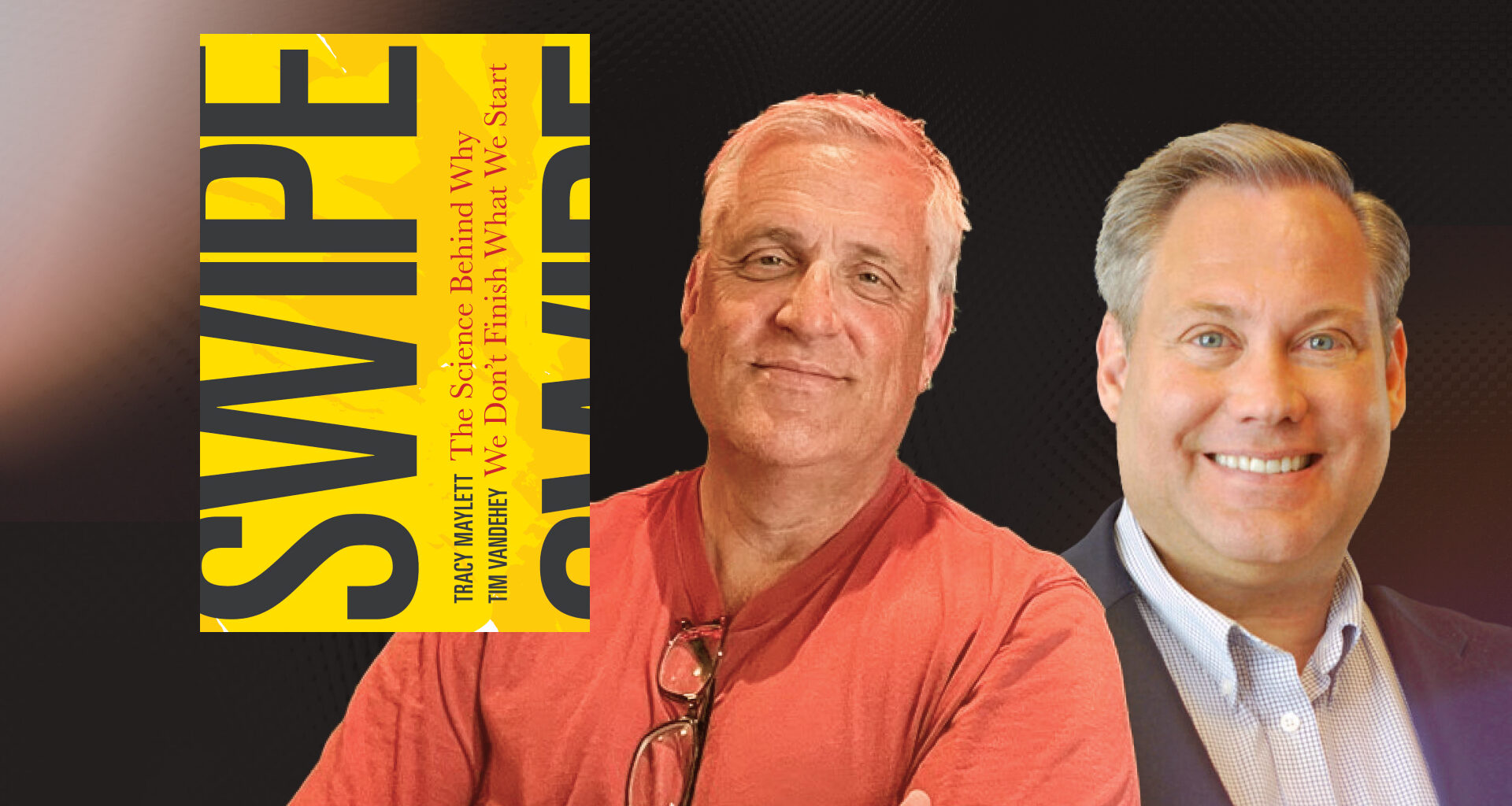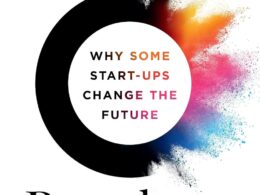The following is an excerpt from “SWIPE: The Science Behind Why We Don’t Finish What We Start” by Dr. Tracy Maylett and Tim Vandehey. Amplify Publishing Group.
The made-to-order world of smart devices might make Swiping more ubiquitous and even more tempting, but before you think we’re going to label the Swipe as a millennial or Gen Z phenomenon, stop. We’re not going to predictably gripe about peripatetic, tech-addicted youngsters who can’t finish what they start. Younger people are no more likely to Swipe through life than boomers. Swiping is a universal phenomenon.
There’s been little true scientific research into the phenomenon of quitting what we start, but there’s been plenty into a Swipe-adjacent phenomenon: procrastination. According to work done by Joseph Ferrari, professor of psychology at DePaul University, 25 percent of people around the world are chronic procrastinators.1 While one-fourth of the world fits this “chronic” label, nearly all of us fit somewhere on the don’t-finish-what-we-start spectrum.
Research conducted at the University of Scranton found that 92 percent of people who set New Year’s resolutions fail to achieve them2 —which will come as no surprise to anyone who’s sworn on December 31 to look like a runway model by beach season, only to reach the Fourth of July with only their wallet lighter after purchasing unused workout equipment.
But here’s the big problem: according to research from Finder, 74.72 percent of all Americans planning to make New Year’s resolutions for 2021 were confident they would achieve their resolutions. That’s a deep disconnect between aspiration and accomplishment. That’s why the best evidence of the Swipe is literally the people around us. We all know dozens of family members, friends, peers, and colleagues who complain bitterly about the things they’ve meant to do for years but haven’t done—big things, like going back to school, and seemingly small goals, like finishing household projects. You almost certainly have your own list of unfinished frustrations; we all do. That’s why an undercurrent of discontent runs through life for so many of us. We know we’re capable of more, but we just can’t get there.
In 2014, when employee experience firm DecisionWise began researching “intent to stay” statistics (data on individuals who plan to remain with their current employers) they were surprised to find that, despite what many had claimed, fewer than 11 percent of employees had been actively circulating their résumés. Much of that lack of activity was likely related to a tough global job market. However, that number has increased dramatically. In 2022 CNBC reported that, according to studies conducted by consulting firm Willis Towers Watson, 44 percent of workers reported looking for a new job. When given the opportunity to look around and compare our current situation to a hypothetical alternative, it seems we quickly become dissatisfied.
Swiping affects virtually every individual in every environment. Apart from the obvious examples we’ve already cited—work life, creative projects, weight loss—there are many others. College students who drop out after sophomore year because the work is too grueling are often Swiping, assuming that one day they’ll circle back to finish their degree. Many never do. Nicotine is a highly addictive substance, making cigarette smoking a notoriously difficult habit to quit. Despite this, roughly 1.3 million Americans quit each year, but the individuals who fail are those who can’t help but Swipe past the unpleasant physical and psychological sensations that come with nicotine withdrawal. They quickly pivot to the relief of a satisfying smoke, only to feel guilt and shame after they do.
The serial dater who ghosts potential partners as soon as casual dating becomes something more serious is a Swiper. So is the patient who fires their physician because said doctor gave them health advice they didn’t want to follow, like losing weight or cutting saturated fats. Then there is the employee who is “just here for the paycheck until that dream job comes along.”
Perhaps you know someone who is always working the next business angle—the friend who leaves one business venture for another under the pretense that the next big opportunity is just around the corner. We tend to idolize serial entrepreneurs—those who seem to have the Midas touch—as paragons of business moxie. But for every true entrepreneur, we find many more people who bounce from one business experiment to the next because they become bored or frustrated, or lose interest once the exhilaration of a startup fades into the day-to-day grind of running a company.
Declining to engage when things get difficult or complex doesn’t just affect individuals either. We see it in organizations too. After years of researching engagement in the workplace and collecting millions of survey results from thousands of businesses, we know for certain that when people disengage—when they stop caring and recoil from the task or challenge in front of them—the results of their work suffer. Companies invest millions of dollars to encourage employee engagement because they know that when people disengage they don’t just retreat from their own responsibilities. Their indifference and discontent affect and infect others. Quality slips, productivity drops, customer service declines, and turnover spikes. In a business setting, disengagement is a quiet, creeping disease that kills cultures and ruins organizations (heads up: we will discuss this more in chapter 4). But do you know what makes this even more dangerous? That bad job spills over into other areas of life as well; you take it home with you. More on this later.
Even giant corporations Swipe. Remember Blockbuster Video? If you’re under thirty, you might not. That’s because the retail video rental company, which dominated the video rental market back in the day when you and your friends had to drive to a store to rent movies on DVD and VHS, Swiped away from what might have been its salvation.
In 1999, two years after Blockbuster said, “Thanks, but no thanks,” to buying Netflix for a paltry $50 million, the company teamed up with Enron—yes, that Enron—to create a robust video-on-demand platform. The result was a platform that worked and that customers liked. Blockbuster was poised to seize a substantial portion of the fledgling streaming market. But Blockbuster was so single-minded about its stores that it neglected the video-on-demand service. In 2001 they completely abandoned it, and by 2010 the company was bankrupt. Meanwhile, despite some setbacks in 2022, Netflix has become the dominant brand in streaming entertainment
Governments Swipe too. The People’s Republic of China got into the act with the medieval-themed Wonderland, which it insisted would become the largest, grandest amusement park in Asia. When the Chinese government got into an endless series of disputes with local officials and farmers, however, the half-finished project was abandoned in 1998. An attempt to restart development in 2008 also flopped, and the park was finally demolished in 2013. In its place now stands an outlet mall.






